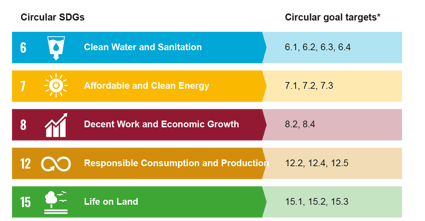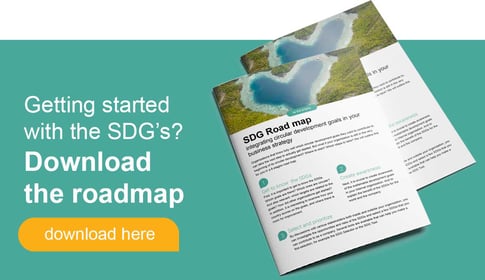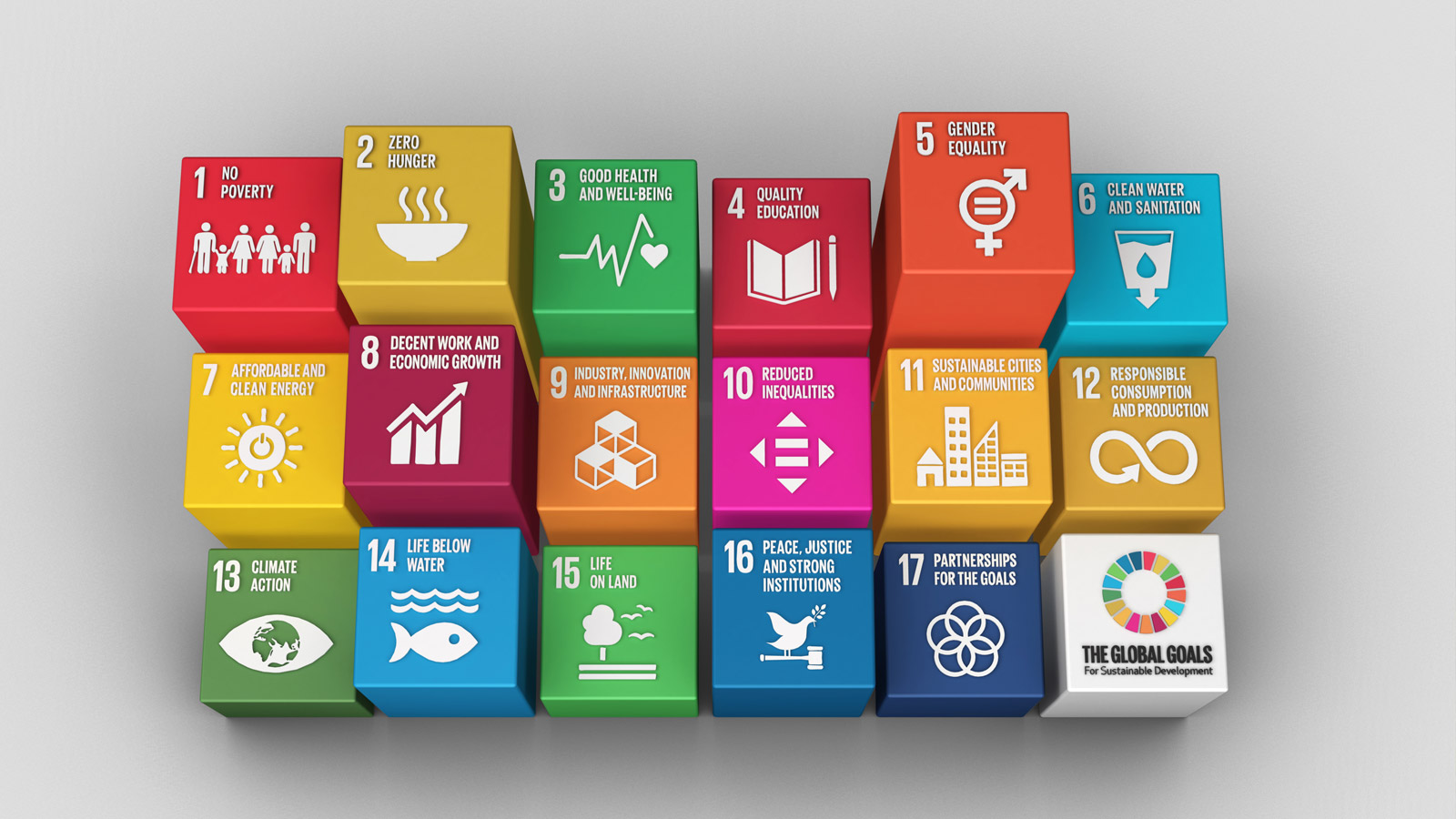How do you get your circular ambitions moving in the right direction, as an organisation? One suitable way to do this is using the Sustainable Development Goals. But you surely have to know which ones to use. And how to best employ them to benefit from them indeed.
The Sustainable Development Goals?
First, the Sustainable Development Goals (SDGs); what about them? The SDGs are 17 goals and 169 targets or sub-goals to make the world a better place by 2030. The goals were set in 2015 by the United Nations and are the compass for sustainable development. For instance, 'no poverty' is one of these goals, goal 1. 'Clean water' is another one, goal 6.
Increasingly, more companies are working with the SDG’s
All around the world, more companies are using the SDG’s to direct their business strategy. Companies often choose some SDG’s that fit their organization's profile. These are goals they can make a difference with, as well. For example, it makes sense for Philips to commit itself to goal 3; 'good health and well-being'. And that FrieslandCampina strives for fair incomes for its farmers. This is connected to goals 12 (responsible consumption and production) and 8 (decent work and economic growth).
What are typically circular SDG’s?
But what if you have circular ambitions as a company? And would want to make a difference? A British study minutely demonstrated the overlap of circular economy with the SDGs. For this purpose, the underlying 169 targets have been thoroughly analyzed. It appears that the following development goals fit in well with the principles of the circular economy.
- SDG 6: Clean water and sanitation
This goal speaks for itself: clean water and the right sanitary facilities for all. This means it is necessary to invest in systems to recycle wastewater for safe reuse. Four targets of SDG 6 are directly linked to circular economy (6.1, 6.2, 6.3, 6.4).
- SDG 7: Affordable and clean energy
Goal 7 is about access to affordable and sustainable energy. Here too there are clear circular principles involved because sustainable energy is about energy from renewable sources. The aim is to increase substantially the share of renewable energy in the global energy mix. All three targets are about circular economy (7.1, 7.2 and 7.3).
- SDG 8: Decent work and economic growth
This goal is about promoting sustainable and economic growth. And about decent work for all. Companies often select this goal. The circular character of this goal is mainly included in target 8.2. About achieving higher levels of economic productivity by innovation, amongst other things. Target 8.4 can be identified as circular as well, as it states that economic growth cannot lead to environmental degradation.
- SDG 12: Responsible consumption and production
Goal 12 has ground in common with circular economy. This goal is about ensuring sustainable production and consumption. This means using natural resources instead of polluting resources. And these must be managed responsibly. Waste is reduced substantially through prevention, recycling, and reuse. Targets 12.2, 12.4 and 12.5 are circular.
- SDG 15: Life on land
This goal is about protecting nature and preserving biodiversity. Nature in its purest form is pre-eminently circular. It is with a reason that multiple targets are included in this SDG. For example, target 15.1, conservation, restoration and sustainable use of forests, wetlands, mountains, and drylands. In addition, we must halt deforestation and afforestation and reforestation globally; 15.2. And restore degraded land. As is stated in target 15.3.

* These targets have a direct link with circular economy. Several other targets also have points in common, albeit indirectly. There are also SDGs that only have a direct link in one target. For instance, SDG 14: life below het water. In a circular economy it is important that marine pollution is reduced including the plastic soup.
Get started! But will companies benefit from it?
Organizations that know fully well which circular development goals they want to contribute to, can take the next step to actually get started. But then the next two questions arise. First: will your organisation benefit from it? And if so, secondly: how to start?
The added value of circular enterprising
To start with the first question. Yes, the transition to a circular economy has great potential. For the world: a CO2 reduction of 48% in 2030, for example. An average increase in annual disposable income of 3,000 euro in Europa. 700 million dollar savings on consumer production in America. At business level the circular economy also offers opportunities. For instance, discovering new markets and being able to save on material costs. And an increasing business stability as material costs put less pressure on business operations. Furthermore, new services and therefore new jobs emerge within the circular economy. These new services, moreover, can lead to a strong and sustainable client relationship. Ranging circular activities under universally shared development goals is both smart and logical. This not only promotes an organization's reputation, but a common language also facilitates the cooperation with other companies.
Benefit of circular enterprising
- saving on material costs
- business stability
- innovation opportunities
- new jobs
- sustainable client relationship
- reputation
- improving chain cooperation
Good examples tend to be followed…
Unilever is the prototype of an organization that has fully integrated the Sustainable Development Goals into its business operations. In Unilever's Sustainable Living Plan, that sets the sustainable course of the company, the SDGs have been included. For instance, for SDG 15 the plan specifically details how Unilever wants to contribute to the preservation of biodiversity, including practical examples. A similar integration can be found at the Philips Group, which links its circular approach to SDG 12, responsible consumption and production. Philips has added a concrete goal: 25% of its turnover comes from circular products, services, and solutions.
How to start?
These are all great examples. From leading companies too. But what if your organization is still in the very beginning of its circular development? Where to start? Which steps to take? We will outline this for you in a 6-stages roadmap.
Find out more?
Milgro and its clients have a quantifiable impact on multiple SDGs. For example, we deliberately select goal 12 among other goals: responsible consumption and production. This goal fits in perfectly with our mission: to support clients to gain more value from natural capital. Would you like to know more about how we can employ our ambition to help you pursue yours? And how you can incorporate the SDGs?












